QuestionOkay .. so I have two female cats. I would like to ask a few questions that have been on my mind.
First off My sister owns one of the cats in the house. She is about 2 and a half years old. But she was the runt of her litter. She has remained a small cat her whole life. But out of our fears she got pregnant. I was away for her whole pregnancy. But she gave birth to one cat and wasn't fully developed it seemed. My sister described the kitten as larger than the litter that was just born, the top of its head was gone, so you were able to see the brain.. and one eye was large and bulging. I was just wondering what happened here.
And so comes to my cat. She is about a year and a bit. She is a large cat so i was confident that the same thing would not happen to her. I would not be able to see that sight anyways. But she had a litter of 4. I was there for the birth and occasionally would check up on the kittens. The first kitten born was the runt of the litter. Sadly it passed away. Is it a high percantage that runt kittens may not make it? We are not completely sure of the reason it died.. It is possible it just wasn't eating enough, but I fear that the mother might have smothered it. She is a large, and very furry cat. If this is what happened, does this mean that there are other precautions to take to watch out for this first time mother? The other kittens are doing fine. Theyre growing, eating, and cuddling together.
What I'm worried about now is that just suddenly my cat moved her 4day old litter. She had chosen this box about 3 weeks before she was expected to deliver. So I'm wondering why she moved them to an unsafe area.
This is my last paragraph, I promise. OKay so I have mentioned that I have two cats in the house. We keep the other cat away from the litter. But she accidentally found them this morning.. Which I think could be a reason why the litter was moved. She didn't harm them or anything. She seemed more worried, running to us as if letting us know. I was wondering when would be a good time to officailly introduce the litter to the other cat.
AnswerDawn,
Your first litter born to the tiny kitty could have had any number of issues in the womb. I am somewhat surprised that this cat was able to deliver the deceased kitten vaginally as you mention that there was a fair difference in the sizes of the litter mates. Your cat's labor and delivery sounds fairly normal. Many people believe that kittens known as the runts of the litter are weaker and commonly die. Usually the runt is smaller because he/she didn't get quite as much nutrients in the womb and this continues after birth because the kitten isn't likely to be as physically strong or dominant as his/her larger litter mates. The death rates for runts really aren't any higher than they are for the average kitten. In my experience kittens that die within a fairly short amount of time after birth tend to have some congenital defect that isn't conducive to life outside of the womb. It's not common for mother cats to smother their kittens, in general cats are very good and attentive mothers which is part of why there is such a huge issue with overpopulation.
It's a good idea to keep some basics on hand when you have a litter of kittens at home. Things like a kitchen scale measuring in grams up to two pounds, new oral syringes (you can find them in the baby section of your local pharmacy), a container of a powdered kitten milk replacer such as Mammalac, Just Born or KMR and some meat and broth baby food (be sure to avoid onions, garlic, starches and unnecessary junk in the baby food. I usually either make my own or use a brand called Mother Hen which is sold in the baby section in the freezer, it's pureed meat, homestyle.) and a container of commercially available weaning formula. The scale is to weigh the kittens regularly and make sure that they are growing and gaining weight properly, this will mean that you are able to spot any potential problems sooner and correct them if at all possible. Oral syringes and kitten milk replacer are good to have on hand for a couple of reasons. If mom develops mastitis or she isn't able to produce enough milk to keep up with the nutritional needs of her offspring you can supplement with formula. Mother cats do require a bit of extra nutrition so that they are able to maintain a healthy body weight while nursing a rapidly growing family so it's not a bad idea to mix up some kitten milk replacer and allow mom to have it so that she gets the extra help she needs to feed her babies. The baby food is meant to feed the mom if she seems hungry in spite of record food consumption - some foods don't contain proper amounts of accessible nutrients which essentially means that the labels on pet food and the nutritional breakdown aren't necessarily reflective of what amount of the nutrients can be absorbed. Meat based baby food is also a good food to start the kittens off on when they become more interested in solid food, let them tell you when though. As for the weaning formula this is a good addition to the pureed meat and this makes a great first food whether a kitten is hand reared or has nursed and gone through the natural progression of things to become ready for solid food. By mixing the weaning formula as per the instructions and adding it to pureed meat which should be about the consistency of cooked cream of wheat and adding a half tablespoon of organic, unsweetened, full fat, plain yogurt the kittens will have a nutritious first food that will be less likely to cause diarrhea.
The assumption that kittens and cats need to have cow's milk in their regular diet is a common misconception. Most cats are actually lactose intolerant by the age of 2-3 months and will develop diarrhea and vomiting if given milk. Yogurt and cheese are different from other dairy products - they contain very little lactose and the beneficial bacteria and enzymes normally found in the digestive tracts of mammals. Cheese shouldn't be given as a regular part of the cat's diet although you can give your cats small pieces of old cheddar to eat - this will help to break down plaque and tartar on their teeth near the gum line and contribute to better oral health which means that the cats will be healthier over all.
It's very important to make sure that your mama cat and her litter are allowed to be away from other cats in the household. Your hunch that the reason this mom moved her kittens is because the other female cat found them is likely correct. In cat colonies and multiple cat households it isn't uncommon for female cats that have never had kittens to begin producing milk and attempting to take the kittens and raise them without their mother. It's not uncommon for more dominant cats to try and steal newborn kittens from less dominant female cats. I would suggest that mom and her babies are kept in a quiet room, behind a closed door with all of the usual amenities (food, water, litter, a comfy place to sleep, toys, attention, etc) until the kittens are around 6 weeks old or so. Once the kittens are old enough you can simply open the door and allow them to wander within the household provided that you have kitten proofed all of the areas they have access to and there are enough litter boxes for them. I would suggest that you keep the kittens separate until they are able to use the litter box reliably as well to avoid any accidents throughout the house. Young kittens can be compared to toddlers when it comes to toileting - they need to be kept close to a washroom at all times and they sometimes need to be reminded that they need to go because they get caught up in play and don't realize the need to go to the toilet which can lead to accidents. Kitten sized litter boxes should be located in most rooms that these babies will have access to so that they don't have accidents on your furniture or floors. Kittens have a tough time getting into adult sized litter boxes so being sure to purchase the right sized litter pan is important.

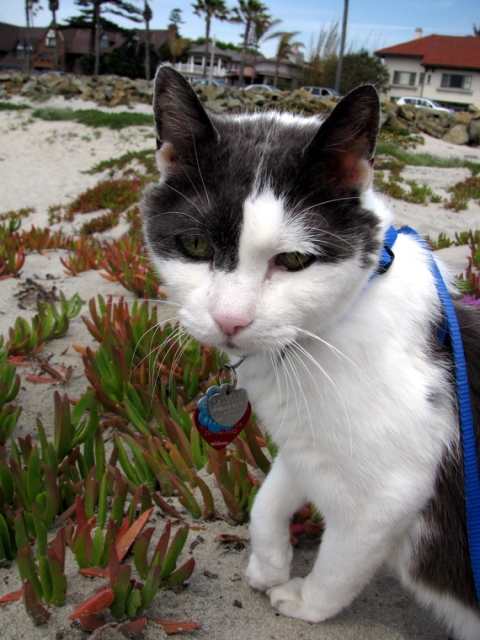 18 year old cat has blood clots in urine
Question
Tucker
My 18 year old male neutered cat is hyp
18 year old cat has blood clots in urine
Question
Tucker
My 18 year old male neutered cat is hyp
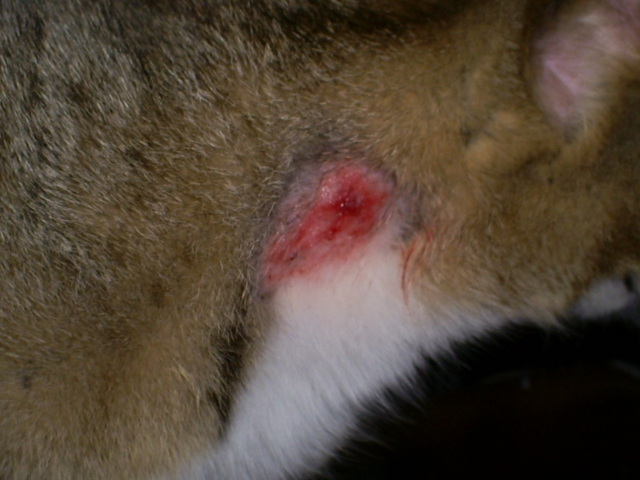 My cat is loosing hair .
Question
A picture of the probl
My cat is loosin
My cat is loosing hair .
Question
A picture of the probl
My cat is loosin
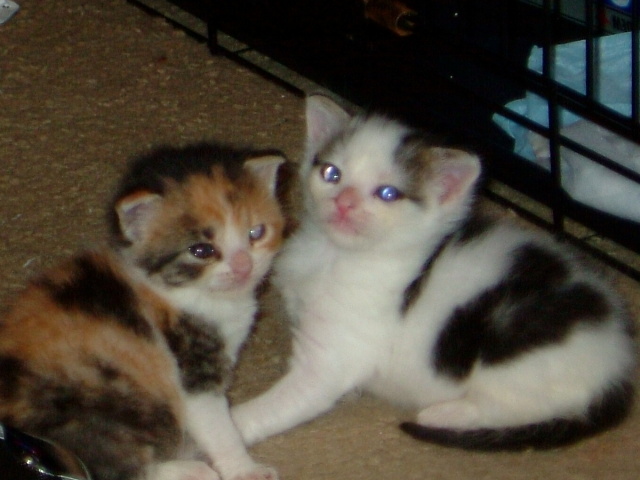 2 Ferals
Question
Sister and Brother at
Hello!
Im so glad I fo
2 Ferals
Question
Sister and Brother at
Hello!
Im so glad I fo
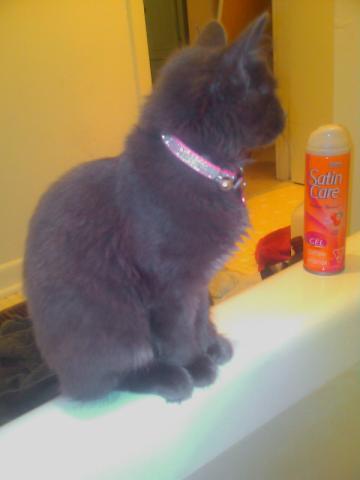 urgent cat problem
Question
kitty aka chanel
my cat is about 7 mont
urgent cat problem
Question
kitty aka chanel
my cat is about 7 mont
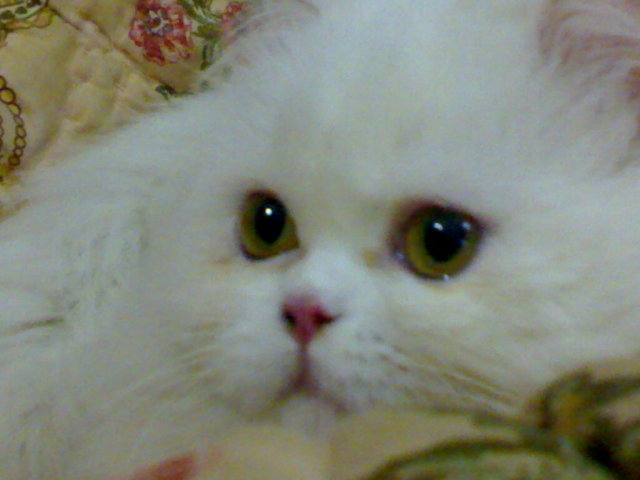 What is the breed of my cats
Question
1st
Hello Ali
Thanx for giving us time to get
What is the breed of my cats
Question
1st
Hello Ali
Thanx for giving us time to get